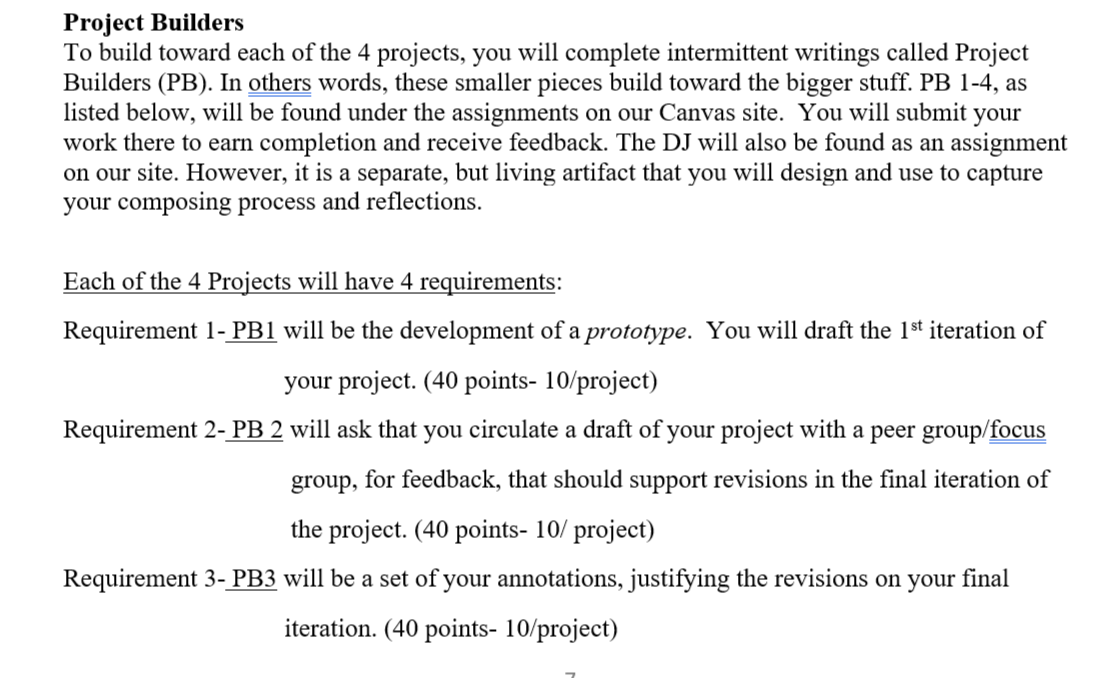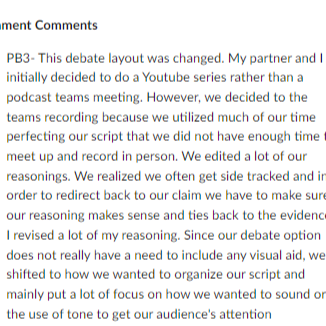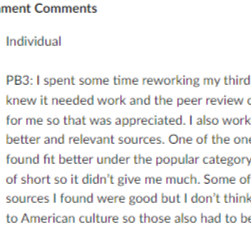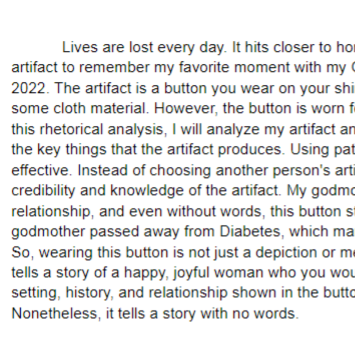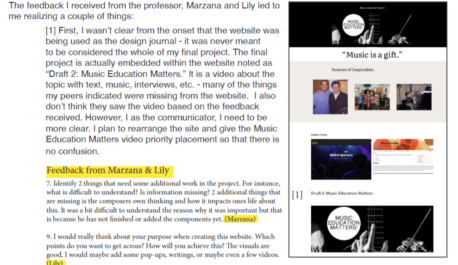
project builder 3 (pb-3)
improve
Project 1– “Making a Thing” asked students to identify a problem or issue of their choosing, not assigned by the instructor. Then, they were to develop an original artifact that attended to the problem or issue address fellow peers in our classroom.
Students were tasked with developing an entire project without direction for its genre, modality or content. Instead, students had to design a vehicle for expressing their ideas. When they completed the project and began to reflect, PB-3 was intended to have them thinking about micro level edits. They were asked to examine select feedback from their peers through the lens of strengthening their intended message. How might the rewording of one sentence contribute to the project’s overall effect?
Project 2– “Pulling a Thing Apart” asked students to break an existing artifact down to a set of features or components for rhetorical analysis. The subject matter could depart from the content of Project 1.
Instead of making decisions about edits and revisions to make in the student’s rhetorical analysis essay, PB-3 focused on a pivotal section of the essay. The writing process for the rhetorical analysis asked that students write the body paragraphs first. This flipped process allowed students to identify three rhetorical elements as well as locate appropriate evidence for supporting their assertion about the artifact’s effectiveness in meeting its purpose through the three elements. Once the student’s received feedback on their body paragraphs, in PB-2, the student writer was positioned to develop a clear claim statement that identified the three elements for analysis. The Project Builder also prompted students to set up the necessary background information for their artifact. The established task(s) for PB-3 was altered from its original form in the syllabus for the Canvas assignment.
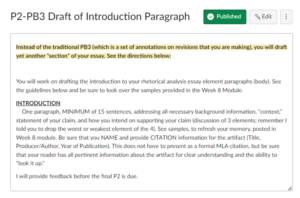
Project 3– “Discussing Things” asked students to resituate the kind of work they had done previously in Projects 1 and 2 by creating a new artifact that performed an argumentative function in a public space. Students were expected to employ some of the rhetorical strategies analyzed in Project 2 by other producers.
By nature of its genre, argumentative writing is expected to be persuasive and effective in engaging the audience. Yet more, the success of the argumentative artifact can often be qualified by the writer’s skill in performing empathy for the opposing viewpoint. When students wrote PB-3, they were asked to qualify their 3rd project based on peer feedback from PB-2. Student writers could go into the artifact and annotate sentences and/or sections where they might need to make improvements. When the writer(s) made an assertion, was there convincing support? Did the writer(s) provide a citation and explain it sufficiently? Were the writer’s able to emphasize the connection between the assertion and the support, which would ultimately strengthen the overall argument in the specific public space?
Project 4– “Putting a Thing Back Together, Better” asked students to return to their work in Project 1 equipped with a fresh set of knowledge, tools, and inspiration. They had to redesign their Project 1 by choosing a new modality and new target audience for the redesigned artifact.
Project 4 was a redesign of Project 1, so student reflection needed to revisit similar points made in PB-3 from Project 1. Students were asked to look at edits and revisions on the micro level. So, in looking back through their work on Project 4, writers needed to use a designer lens. For instance, if a peer reviewer pointed out that a statement needed revisions for clarity, then the writer/designer should determine the most effective language to employ to promote effectiveness in the overall project in light of the rhetorical situation. It was especially important that the writer/designer also think about the kind of language and variety of means that might be used to do this work as the modality had changed from P1 to P4. What would do the best work in P4?
lesson excerpt lesson excerpt
